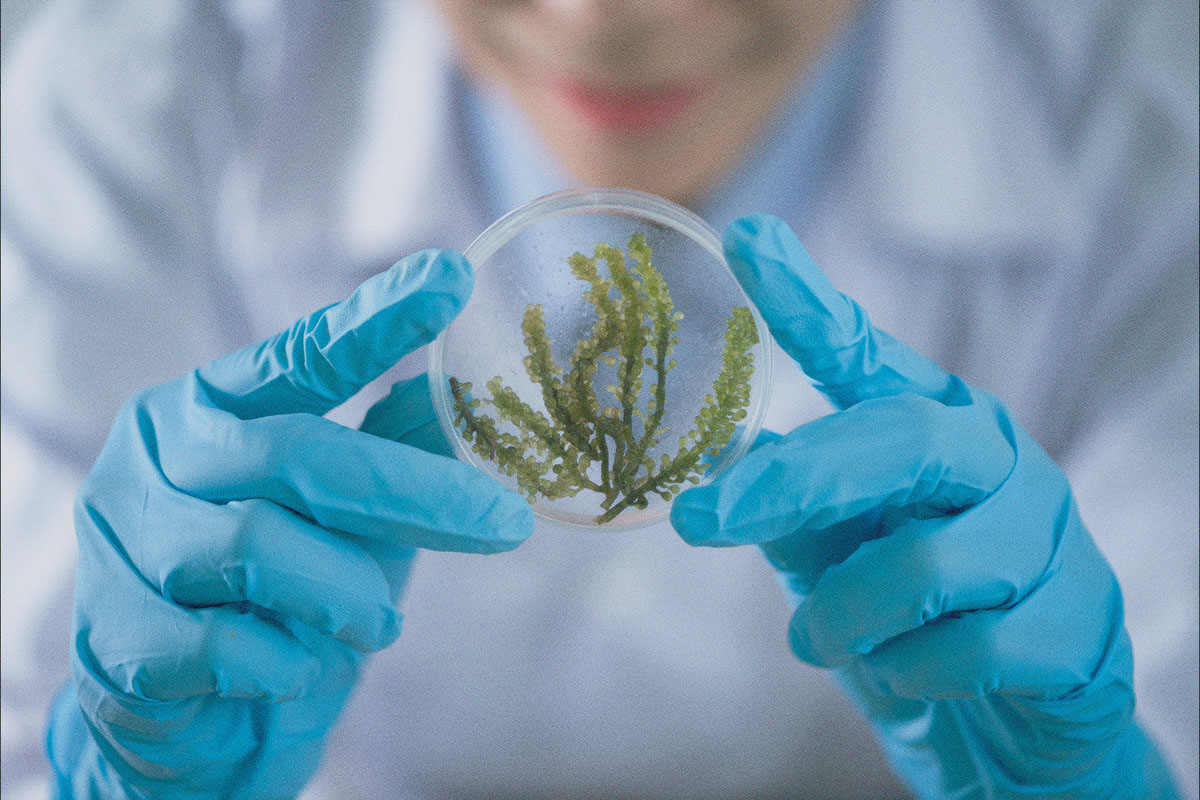 Policy Brief + Recommendations
Policy Brief + Recommendations
Discover the urgent need to protect children’s developing brains from the harmful effects of plastics and toxic chemicals with this recent report, “Protecting the Developing Brains of Children from the Harmful Effects of Plastics and Toxic Chemicals in Plastics.”
This briefing paper, prepared by experts from Project TENDR, summarizes mounting scientific evidence linking plastic exposure to neurodevelopmental disabilities and cognitive deficits in children. It also provides essential policy recommendations to strengthen the new global treaty on plastics pollution. Download the report or watch the webinar to learn more about how we can address the toxicity and proliferation of plastics and petrochemicals.

Tests by Consumer Reports found bisphenols and phthalates, chemicals used in plastic, in a wide range of packaged foods, raising concerns due to their potential health effects, including disruptions to the endocrine system and associated health issues.

Despite its harmful effects, BADGE is not included in Europe’s new food safety guidelines, which focus on bisphenol A (BPA) and a few other bisphenols, highlighting regulatory gaps in addressing this chemical commonly found in common materials.
My daughter is nine, and she is going through the first stages of puberty.
This is four years before I reached that stage and two years before any of my three sisters or sister-in-law hit this developmental milestone. While nine is still considered in the normal developmental range for girls in the United States, it is certainly early compared to the women in my generation.
As HBN’s Chief Research Officer, it is my job to understand the impacts that different chemicals can have on human health and work every day to help people make informed decisions about the products they use. As a mother, it is also my job to keep my kids safe. While my research will not help me answer the question about why my daughter may be going through puberty earlier than I did, I can share what I have learned about chemicals found in building materials and their potential impacts on children’s health in the hope that you can join me in making the best decisions we can for our future generations.
While this article will focus on one environmental factor (exposure to pollutants related to the use of building products), I recognize this is one of many factors that impact children’s health. These include biological factors (e.g. sex, genetics, age), social factors (e.g. income, culture), and environmental factors (e.g. diet, exposure to pollutants).1 With this in mind, this article does not tie specific products or chemicals to specific health outcomes in children. Instead, this article discusses two groups (or classes) of chemicals used in building products that are known to have reproductive toxicity or endocrine disrupting concerns and are found both in household dust and children’s bodies.
Children are not little adults. For example, my five year old likes to sleep in a small cardboard box at night these days with his neck at an angle that would take me weeks to uncrick. They also eat more, inhale more, and drink more than adults per kilogram body weight.2 They also spend more time on the floor (see box story above) and are therefore more likely to ingest or inhale household dust. Their immune and metabolic systems are not fully developed, so their bodies process and eliminate chemicals differently than adults. Lastly, children’s bodies are in a constant state of growth and development, and as such they can be more sensitive to chemicals than adults.3


Let’s explore two groups of chemicals found in building products and in children’s bodies that can impact the endocrine systems.
Bisphenols
Bisphenols are a group of chemicals including bisphenol A (BPA) and bisphenol S (BPS). BPA is on the EU Substances of Very High Concern (SVHC) list due to endocrine disrupting properties. Specifically, many bisphenols mimic the hormone estrogen. BPA is considered “Toxic to Reproduction” by the European Chemicals Agency. Bisphenols are found in many different types of products including plastic items, paper receipts, and metal food and beverage can liners. In building products, BPA-related compounds are found in “epoxy” resin products, for example, epoxy flooring adhesive and epoxy fluid-applied flooring.
In last year’s article, “There’s What In My Body?” I shared how I found BPA and BPS in my body through a biomonitoring study by Silent Spring. Compared to other participants in the study, I had lower levels of BPA but higher levels of BPS, a common replacement for BPA. I was surprised and disturbed by the results, and I cannot help but wonder what my daughter’s levels would be today if we tested for bisphenols or any of the other endocrine disrupting compounds found in household products. Levels of BPA in children are typically higher than for adults. Most importantly, even tiny amounts of endocrine disrupting chemicals, including BPA, can lead to health and behavioral problems in developing children.4 For example, increasing urinary BPA levels in children are linked to an increase in behavioral regulation problems, anxiety, and hyperactivity.
The good news is that bisphenols are rapidly metabolized. If you can identify and remove sources of bisphenols from your home and diet, you can reduce your exposure.
Orthophthalates
Orthophthalates are a group of chemicals used as plasticizers – additives that make plastics more flexible. Orthophthalates can be developmental toxicants per the U.S. National Toxicology Program.5 Some common orthophthalates interfere with the production of testosterone, which can have irreversible effects on the male reproductive system. Higher exposure to certain orthophthalates has been associated with higher incidences of preterm birth; in particular, mothers who had consistently higher exposures to orthophthalates were five times more likely to experience spontaneous preterm birth (Ferguson et al 2014, JAMA Pediatrics). Preterm birth is associated with a variety of adverse health outcomes including increase in disability as young adults.6
Orthophthalates are sometimes called “everywhere chemicals” because they are so common in household products. With respect to building products, up until recently orthophthalates were prevalent in vinyl flooring. While the vinyl flooring industry has largely phased them out of new products, many homes with vinyl flooring installed before 2015 will still likely contain orthophthalate plasticizers. Orthophthalates can also be found in sealants used throughout the home. While the sealant industry is beginning to phase out these chemicals, they are still commonly used.
Similar to bisphenols, phthalates are metabolized quickly, so identifying potential sources and removing those from the home is the easiest way to reduce exposure. Possible sources include older plastic toys, cleaning products, personal care products, sealants, older vinyl flooring (pre-2018), and fragrances.
My daughter is not an outlier. Over the last 40 years, the average age of initial onset of puberty has decreased by 12 months. There are likely multiple reasons for this trend. However, an increase in exposure to a cocktail of endocrine disruptors is a possible explanation. Collectively, we can use our voices and buying power to shift the market towards safer products.
What can you do to help?
- You can step up out of red and choose products that are ranked ideally yellow or green through Informed™
- Ask your retailer to keep products containing hazardous chemicals off of the shelves. The Mind the Store campaign by Safer Chemicals, Healthy Families encourages retailers to move away from phthalates, bisphenols, and other hazardous chemicals. Hot off of the presses is the latest Retailer Report Card. See how your favorite retailer stacks up.
- Support legislation that uses the class-based approach to ban problematic chemicals. The Green Science Policy Institute develops research and supports policies that prevent the use of “Six Classes of Harmful Chemicals”. By reducing the use of entire classes of chemicals, we reduce the chance for regrettable substitution and the inefficiencies and dangers associated with a one-at-a-time or “toxic whack-a-mole” approach to chemical restrictions. In addition to bisphenols and phthalates, GSPI’s Six Classes include per- and polyfluorinated alkyl substances (PFAS), antimicrobials, flame retardants, some solvents, and certain metals. Numerous state legislatures have passed laws restricting the use of bisphenols and phthalates in a variety of products.
SOURCES
- Commission and for Environmental Cooperation. “Toxic Chemicals and Children’s Health in North America: A Call for Efforts to Determine the Sources, Levels of Exposure, and Risks That Industrial Chemicals Pose to Children’s Health,” 2006. http://www3.cec.org/islandora/en/item/2280-toxic-chemicals-and-childrens-health-in-north-america-en.pdf.
- Miller, Mark D., Melanie A. Marty, Amy Arcus, Joseph Brown, David Morry, and Martha Sandy. “Differences between Children and Adults: Implications for Risk Assessment at California EPA.” International Journal of Toxicology 21, no. 5 (October 2002): 403–18. https://doi.org/10.1080/10915810290096630.
- Commission and for Environmental Cooperation. “Toxic Chemicals and Children’s Health in North America: A Call for Efforts to Determine the Sources, Levels of Exposure, and Risks That Industrial Chemicals Pose to Children’s Health,” 2006. http://www3.cec.org/islandora/en/item/2280-toxic-chemicals-and-childrens-health-in-north-america-en.pdf.
- Braun, Joe M., and Russ Hauser. “Bisphenol A and Children’s Health.” Current Opinion in Pediatrics 23, no. 2 (April 2011): 233–39. https://doi.org/10.1097/MOP.0b013e3283445675.
Braun, Joe M., Amy E. Kalkbrenner, Antonia M. Calafat, Kimberly Yolton, Xiaoyun Ye, Kim N. Dietrich, and Bruce P. Lanphear. “Impact of Early-Life Bisphenol A Exposure on Behavior and Executive Function in Children.” Pediatrics 128, no. 5 (November 2011): 873–82. https://doi.org/10.1542/peds.2011-1335. - “NTP-CERHR Monograph on the Potential Human Reproductive and Developmental Effects of Di-Isodecyl Phthalate (DIDP).” National Toxicology Program, U.S. Department of Health and Human Services Center for the Evaluation of Risks to Human Reproduction, NIH Publication No. 03-4485. April 2003.
- Lindström, Karolina, Birger Winbladh, Bengt Haglund, and Anders Hjern. “Preterm Infants as Young Adults: A Swedish National Cohort Study.” Pediatrics 120, no. 1 (July 2007): 70–77. https://doi.org/10.1542/peds.2006-3260.
You may know the phrase, “you are what you eat.” There is a parallel concept when it comes to hazardous chemicals—you are what surrounds you!
Every day we come in contact with a large number of chemical products. Think of the last time you walked through a space being remodeled, or sat in a new car and thought “what’s that smell?” Your body notices that smell because a chemical or substance is interacting with the smell receptors in your nose. The same characteristics that allow it to interact with your nose could make those chemicals affect the body in other ways too—sometimes causing harm. The more invisible moments occur when sleeping on your mattress filled with flame retardants or using your personal care products while getting ready for work. Perhaps you work in a factory, as a contractor installing products, or some other job requiring direct contact with a variety of chemicals. The list (both visible and invisible) goes on and on. While a one-time exposure might not lead to health effects, a life-time of exposure and buildup to these chemicals can. More and more scientific evidence links these chemical exposures to diseases like cancer and diabetes, as well as developmental delays, reproductive health issues, and Autism Spectrum Disorder1.
There are three main exposure pathways: 1) inhalation – breathing in contaminated air, 2) ingestion – the inadvertent passing of dust or other chemical residues from hands to mouth, and 3) because our skin is like a sponge – absorption through dermal contact. According to the Environmental Working Group (EWG), babies still in the womb are exposed to more than 200 chemicals that pass from their mother through the umbilical cord2. This should make you wonder—what are the chemicals I may not realize are entering my body? There is a term used to describe the load of chemicals in the human body—body burden.

There’s what in my body?!
We sat down with Teresa McGrath, Healthy Building Network’s (HBN) Chief Research Officer earlier this year to talk about urine, specifically hers. Earlier this year, Teresa participated in a study on chemical body burden led by Silent Spring Institute. Teresa is an avid runner who’s completed marathons and loves snacking on fresh vegetables from her local farmers market. She is one of the healthiest and most health conscious individuals on our team and we were very interested in learning her results.
The study, titled Detox Me Now, included approximately 350 participants. Teresa submitted her urinary sample for testing 15 chemicals, including3:
- Chlorinated phenols
- Bisphenols
- Alkylphenol ethoxylates (found in paints)
- UV filters
- Parabens (commonly used in makeup products as a preservative)
- Antimicrobials
Teresa’s Results
Her study results detected seven of the 15 chemicals tested in her urine sample. There are a couple of basic rules to follow when it comes to interpreting biomonitoring results. The first is that a higher number is not always a reason for concern4. And the second is that from a hazard perspective, not all chemicals are the same5. Each chemical possesses its own set of health effects at different dosages and routes of exposure6.
Regrettable Substitutions
During our conversation, Teresa McGrath offered a particularly interesting study finding—her differing bisphenol results particularly when compared to the study median and the US median.
This study tested for two bisphenols, bisphenol-A (BPA) and bisphenol-S (BPS). If BPA sounds familiar, that is probably because this is the much-talked about ingredient commonly used in polycarbonate plastic bottles, lining for food and beverage cans and thermal paper receipts. It can cause endocrine disruption.7,8 BPS is a common replacement for BPA in many thermal applications including paper receipts and plastics and has similar health concerns as BPA9. Teresa’s results for BPA were lower than the median for the Silent Spring Detox Me Now study participants AND lower than the US median10. However, her BPS levels were greater than her BPA levels, greater than the median for the Silent Spring Detox Me Now study participants AND greater than the US median11. This is illustrated in the following graphic from her study report.
The report offers two possible explanations:
- Teresa successfully avoids BPA by choosing products that are BPA-free and unwittingly preferring products that use BPS, the common BPA alternative.
- The timing of the studies coincided with an industry-wide shift from BPA to other bisphenols, including BPS. The US median data (NHANES) was collected between 2013 and 2014, while the Detox Me Action Kit test samples are dated 2016 to 2018.
By simply purchasing BPA-free products, one can reduce exposure to BPA. However, industries continue to choose “regrettable substitutions” or replacing one chemical with another similar chemical and/or a chemical with unknown health effects. Much of our work focuses on helping industries avoid regrettable substitutions.
Here’s how you can decrease your exposure to toxic chemicals.
Wrapping up our conversation with Teresa, we briefly discussed the overall study implications and additional survey results. Compared to the National Health and Nutrition Examination Survey (NHANES) conducted by the Centers for Disease Control, participants of this study possessed lower chemical burdens than most people in the United States. One explanation for this may be attributed to 43 percent of participants self-reporting that they avoid products with parabens, BPA, triclosan, and fragrance, and an additional 40 percent reported avoiding two or three of those chemicals.
So, how can you reduce your exposure? Silent Spring offers some ideas, including:
- Asking your favorite brands and stores to choose safer chemicals
- Avoiding personal care products and cosmetics that list parabens as ingredients
- Learning which personal care and cosmetics companies avoid harmful chemicals
You can also download their Detox Me Now App for more tips.
Biomonitoring studies similar to Silent Spring’s are springing up in recent years, as have articles about their results, such as this story in the Guardian. For only a few hundred dollars, consumers can know the exact chemical composition of their bodies. For those who find sample submission undesirable, HBN has added a new feature in our Pharos platform that provides links to biomonitoring databases with information on chemicals identified in the bodies of individuals from different regional communities. The results continually shed light on the need for greater industrial transparency and a transition to safer products.
This is one more example of why HBN passionately paves the way to safer products, offering recommended alternatives from expert chemical analysis and by fostering collaborative industry partnerships.
SOURCES
- Kim et al., “Exposure to pesticides and the associated human health effects.” Science of the Total Environment 575, (2017). 525-535. https://doi.org/10.1016/j.scitotenv.2016.09.009
- Environmental Working Group, “ Body Burden: The Pollution in Newborns.” Environmental Working Group, last modified July 14, 2005, https://www.ewg.org/research/body-burden-pollution-newborns.
- Fransway et al.. “Parabens.” Dermatitis 30, 1 (2019). 3-31. doi:10.1097/DER.0000000000000429
- Casarett, Louis J., John Doull, and Curtis D. Klaassen. 2001. Casarett and Doull’s toxicology: the basic science of poisons. New York: McGraw-Hill Medical Pub. Division.
- Ibid.
- Ibid.
- National Toxicology Program, “Bisphenol A (BPA),” National Institute of Environmental Health Sciences, last modified May 23, 2019, https://www.niehs.nih.gov/health/topics/agents/sya-bpa/index.cfm.
- Silent Spring Institute, “Our Science”, Silent Spring Institute, accessed September 17, 2019, https://libanswers.snhu.edu/faq/48009.
- Ibid.
- Ibid. The “US median” results in this article refer to the NHANES study. The National Health and Nutrition Examination Survey (NHANES) is a program established in the 1960s run by the Centers for Disease Control that tracks the health of adults and children in the United States. NHANES tested surveyed individuals for many of the Detox Me Now Action Kit chemicals. The most recent NHANES data, from 2013-2014, were used as a nationally representative estimate of exposure in the United States.
- Ibid.
Discover how bisphenols and phthalates, commonly used in plastics for added strength or flexibility, can disrupt hormone function, and learn ways to reduce their use for improved health in this informative video.
Many years after Kermit told us of the difficulty of being green, a friend put it another way. “Penny, it’s hard to be you.” She wasn’t slamming me but rather commenting on the burden of being knowledgeable – an appreciation of sorts.
Here’s what happened. While shopping in a grocery store my friend reached for a can of soup. I advised her instead to buy soup packaged in glass containers or boxes because of the bisphenol-A, or BPA, that is widely used in the linings of metal cans.
BPA, an endocrine disruptor, has been linked to an increased risk of cancer, birth defects, diabetes and other health threats. After a decade of research that convinced many retailers to remove BPA containing baby bottles and other plastic food containers from their shelves, a new study from researchers at the Harvard School of Public Health reported large increases in BPA levels in humans after eating just modest amounts of canned soup.
The results of this study surprised the researchers and will undoubtedly lead to further investigation. (Side note: Campbell Soup, the world’s largest soup maker announced it will soon stop using BPA in the linings of its cans.) And it’s not just soup cans. BPA and other endocrine disruptors are found in many products – thermal paper receipts, dental sealants, plastic water bottles and yes, building materials.
Typically they are found in epoxy-based products such as coatings, sealers, adhesives and fillers. As designers and specifiers it is our responsibility to find safer alternatives for BPA-containing products. Low-VOC water-based paints, for example, are BPA-free. But how do you know, and how do you know you’re supposed to know?
My point is this: it’s hard being me and it’s hard being you. I have plenty of cans in my pantry, some of them surely containing BPA in the liners. But just as I can choose to limit the number of canned foods I buy or search for those that are safer, so can we purposely and stridently refuse to specify materials with BPA and other known toxins into our projects.
There is a Chinese proverb that says, if we do not change our direction, we are likely to end up where we are headed. When ignorance ends, negligence begins and its antidote is responsibility. Making the choice to educate ourselves and then act on our newfound knowledge is the ethical obligation of every one of us.
…that some chemicals used for stain or water repellency in building products last longer than nuclear waste?
In fact, as far as can be determined, the most studied of these perfluorinated chemicals, perfluorooctane sulfonate (PFOS) – formerly the key chemical in Scotchgard™ – never breaks down in the environment.[1]
Perfluorinated compounds (PFCs) are manmade compounds, based on the element fluorine, and are the key ingredients in stain- and water-repellent treatments such as Teflon®, Crypton® and Crypton Green®, Gore™, and Stainmaster®, and in nanotech products such as Nano-Tex™ and GreenShield™.[2] Scientists have raised concerns about PFCs because they are persistent, bioaccumulative, and toxic. Moreover, biomonitoring studies confirm widespread human exposure to this class of compounds.
Scientific studies have linked PFCs with developmental toxicity, cancer, thyroid, liver and immune system functions, cholesterol increases, and low birth measurements in newborn humans.[3] The health issues associated with PFCs, coupled with alarming data about the increasing chemical burden of these compounds in our bodies,[4] as well as the widespread exposure in wildlife, have prompted scientists and public health experts to express increasing concern about continued use of these chemicals.
In May 2009, the Stockholm Convention on Persistent Organic Pollutants (POPs) added PFOS to a growing list of chemicals recognized by international treaty as chemicals of greatest concern to be reduced or eliminated in the global environment, putting them in league with widely recognized threats such as dioxin and PCBs.

In the U.S., most major fabric treatment brands continue to use PFCs as chemical manufacturers rush to replace the most well-studied PFCs with similar fluorinated compounds that have not been heavily scrutinized. Although chemical manufacturers such as DuPont resist releasing information about the new compounds, it is clear that some are virtually unstudied, and some that scientists have studied are breaking down to PFOS and perfluorooctanic acid (PFOA), which would add to the reservoir of these persistent contaminants in the general environment. In June 2008, the Environmental Working Group (EWG) released a report on PFCs, which uncovered evidence that manufacturers’ own tests showed that many of the alternative chemicals lead “to a conclusion of substantial risk to human health or to the environment.”[5]
Like nuclear waste, the problem of PFCs isn’t going away. Still, there are steps that can be taken today to stem the tide of PFCs accumulating in our bodies. For many of the PFC applications, we can start out by simply asking ourselves whether we really need these chemicals at all.
For those wanting to understand more about PFCs and potential health concerns, HBN and Kaiser Permanente have produced a paper that examines PFCs in more detail.
SOURCES
- Co-operation on Existing Chemicals – Hazard Assessment of Perfluorooctane Sulfonate and its Salts. Environment Directorate Joint Meeting of the Chemicals Committee and the Working Party on Chemicals, Pesticides, and Biotechnology, Organisation for Economic Co-operation and Development, Paris. November 2002. http://www.oecd.org/dataoecd/23/18/2382880.pdf.
- In addition to these products which are widely used to create water and soil repellency in fabric, furniture, and carpet, PFCs are found elsewhere including fire fighting foams, metal plating, and within the photographic industry.
- References for these health impacts and the chemical burden concerns outlined below can be found in the report Perfluorinated Compounds (PFCs) and Human Health Concerns, from the Global Health and Safety Initiative, http://www.healthybuilding.net/healthcare/2009-04-20PFCs_fact_sheet.pdf.
- Calafat A, Kuklenyik Z, Reidy J, Caudill S, Tylly J, Needham L. Serum Concentrations of 11 Polyfluoroalkyl Compounds in the U.S. Population: Data from the National Health and Nutrition Examination Survey (NHANES) 1999-2000. Centers for Disease Control and Prevention. 2007. http://www.cdc.gov/exposurereport/perfluorinated_compounds_3.html.
- Nadenko O, Sharp R. Credibility Gap: Toxic Chemicals in Food Packaging and DuPont’s Greenwashing: New Chemicals and Risks are Confidential. Environmental Working Group Report. June 2008. http://www.ewg.org/reports/teflongreenwash. Accessed April 15, 2009.
…that some building products may expose you to the chemical banned from plastic bottles?
Everyone has heard the news about the health concerns associated with bisphenol A (BPA) leaching from baby bottles, food can liners and perhaps most famously those distinctive polycarbonate plastic water bottles popularized by Nalgene.[1] Last May, Chicago became the first city in the U.S. to ban the sale of baby bottles and sippy cups made from BPA. Few, however, are aware that BPA is a chemical component of epoxy resins used in a wide range of building materials, typically paints, sealants, adhesives and fillers,[2] that may put manufacturing workers, installers, and building occupants at risk.
Epoxy resins are used in building materials, often listed on a material safety data sheet as a proprietary mixture, without disclosure that the resin is made from BPA. While manufacturers claim that the BPA in epoxy resins is consumed entirely in the production process and does not show up in the final products, scientists investigating the metabolic breakdown of epoxy resins during occupational exposure have found that epoxy resin products can be metabolized in the human body back into BPA and may impact the endocrine and reproductive system of those exposed.[3]Animal studies have linked this hormone-disrupting chemical to prostate cancer, breast cancer, pre-diabetes (insulin resistance), abnormal fat metabolism, early puberty, and changes in the way the brain develops resulting in behavioral abnormalities.[4]
The BPA expert panel from the Center for Evaluation of Human Risks to Reproduction raised concern about BPA in epoxy-based resins, reporting to the National Toxicology Program that, “several studies collectively suggest hormonal effects of bisphenol A exposure, including one in occupationally exposed male workers likely exposed through multiple routes including inhalation…”[5] The NTP’s final monograph states that “a number of studies, when considered together, suggest a possible effect on reproductive hormones, especially in men exposed to higher levels of bisphenol A in the workplace.”[6] Germany has already instituted occupational exposure limits for bisphenol A.[7]


Recent biomonitoring studies have raised concerns about widespread human exposure to BPA. A National Health and Nutrition Examination Survey (NHANES) study found that more than 90% of people in a representative sample of the general population have BPA residues in their urine[8] and that there must be significant non-food exposures to reach such levels.[9]
It is likely that BPA in building products will become subject to greater health and safety regulation, but responsible specifiers do not need to wait for the regulatory system to catch up with the science to protect their clients. Products are available that can replace epoxy-based coatings and adhesives. For example, many paint companies now offer high-performance low-VOC water-based acrylic paints and acrylic-based adhesives for flooring, carpets, and wall covering. For applications where high-performance BPA-free substitutes are not yet available, the act of asking manufacturer reps for products without bisphenol A is an important step to prod the industry to bring safer high performance alternatives to market.
For a comprehensive discussion of the emerging science on BPA risks, read “Bisphenol A in Building Materials: High Performance Paint Coatings.”
SOURCES
- BPA is also known as a component of dental sealants, some medical and dental devices, and thermal paper receipts.
- Epoxy-based products are used in a wide range of applications including coatings (such as paints, floor sealers and protective coatings), adhesives and fillers (including caulks, grouts, mortars, and putties), fiberglass binders and cement additives. Epoxy resins are also in some wind energy applications, generators and other electronic equipment, industrial tooling applications, and materials used in the art, aerospace and marine industries.
- Hanaoka T, Kawamura N, Hara K, Tsugane S. Urinary bisphenol A and plasma hormone solvents in male workers exposed to bisphenol A diglycidyl ether and mixed organic solvents. Occupational and Environmental Medicine, 2002; 59:626; Cha B, Koh S, Park J, et. al. Influence of Occupational Exposure to Bisphenol A on the Sex Hormones of Male Epoxy Resin Painters. Mol Cell Toxicol. 2008; 4(3): 230-234.
- Sarah Janssen, staff scientist for the NRDC, summarizes health concerns and the issue with links to some of the key science on her 7/13/09 blog entry “California is the latest battleground on BPA regulation”. http://switchboard.nrdc.org/blogs/sjanssen/many_of_my_blog_posts.html.
- Expert Panel cited in NTP-CERHR Monograph on the Potential Human Reproductive and Developmental Effects of Bisphenol A page 15. http://cerhr.niehs.nih.gov/chemicals/bisphenol/bisphenol.pdf.
- Ibid at page 37.
- Murakami T, Oyama T, Isse T, et al. International comparison of criteria for evaluating sensitization of PRTR-designated chemical substances. Environmental Health and Preventive Medicine 2007;12:56–65, citing Deutsche Forschungsgemeinshaft. List of MAK and BAT Values 2004, Commission for the investigation of health hazards of chemical compounds in the work area, Report No. 40. Weinheim: Wiley-VCH Verlag GmbH & Co. KGaA; 2004.
- Calafat A., et. al., Urinary concentrations of bisphenol A and 4-nonylphenol in a human reference population. Environ. Health Persp. 2005; 113(4): 391-395. http://www.ehponline.org/members/2004/7534/7534.html. Accessed online June 20, 2009.
- Stahlhut R, Welshons W, Swann S. Bisphenol A data in NHANES suggest longer than expected half-Life, substantial nonfood exposure, or both. Environ Health Perspect. (2009); 117(5):784-789. http://www.ehponline.org/docs/2009/0800376/abstract.html. Accessed online July 20, 2009.

 Health
Health Climate Change
Climate Change